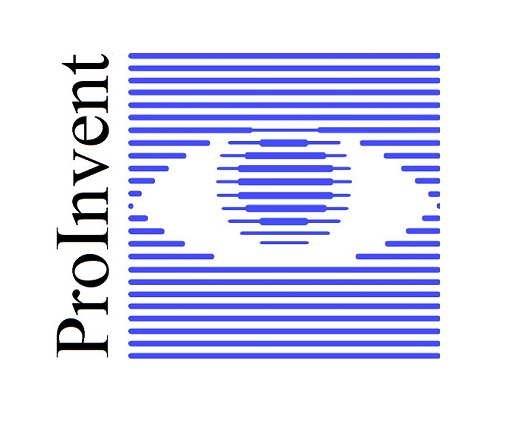
Being smart about Machine Vision
ProInvent has worked with advanced Machine Vision since 1999. We help our clients with reducing takt-times, reducing cost, increase product quality, and increase production flexibility. Our internal machine vision group specializes in state-of-the-art technology with a focus on Smart Cameras and Deep Learning. The strategy is to be flexible and support several different solutions, each of which has different pros and cons. This flexibility allows us to be smart about vision and always choose the correct tool for the job resulting in cost savings, fast development, and increased OEE for our customers.
Our approach to Vision
We have a customer-centric approach to vision. It is crucial for us to serve our clients and deliver vision solutions that meet their wishes and requirement at the right level. Therefore, we are not married to one single vision-solution. Instead, we provide the flexibility to use the best tool for the job. We do so by working with three levels of vision systems:
1 . Industrial standard Smart Camera systems, which are relatively inexpensive and fast to integrate
2 . Industrial standard PC based vision systems, including Deep Learning
3 . Open Source PC based vision systems, including Deep Learning
Smart Cameras are integrated vision systems that have camera, lighting, processor, algorithms, and communication in one box. Their software is configured to a specific task rather than developed, which makes them fast and relative cost-effective to integrate. They are, however, limited in compute power, and multi-camera systems often become too expensive if implemented with Smart Cameras. Smart Camera examples are the Cognex’s In-Sight series and Omron’s FHV7.
Standard PC based systems provide more compute power than Smart Cameras and easily allows for multi-camera systems. These systems require more development time than the Smart Cameras. Still, they benefit from an extended range of algorithms, which also includes Deep Learning, and the ability to deliver results faster. Examples are Cognex’s VisionPro/Designer/ViDi, MVTec’s HALCON, and MATROX’s MIL.
Open Source PC based systems give us maximum creative freedom and future-proof solutions . They can be highly tailored to solve almost any challenge but at the cost of increased development time. We turn to this approach in cases where customers have highly specialized requirements, emphasizes Open Source software, desire software with decreased dependencies on commercial licenses, or software which is guaranteed to be maintainable in the future. OpenCV and TensorFlow are examples of software libraries that we work with.



We are committed to Deep Learning
Ever since Alex Krizhevsky, Ilya Sutskever, and Geoffrey Hinton drastically raised the classification accuracy on the ImageNet Computer Vision challenge in 2012, Convolutional Neural Networks and Deep Learning have continued to revolutionize all aspects of the industry. ProInvent is at the forefront of the development and is experienced in standard Deep Learning approaches, such as Cognex ViDi, as well as designing custom networks in Keras and TensorFlow with inference through OpenCV and TensorRT.
Because we are proficient in both approaches, we can select the best solution for a given challenge. We have thoroughly benchmarked ViDi against our implementations of state-of-the-art networks, and therefore we know their respective pros and cons.
We leverage both optics and algorithms
We usually tackle a Vision-challenge from both the optical side and the processing side. Some challenges are best solved by designing the image forming process cleverly. In many cases, the choice of wavelengths, illumination directions, light polarization, and image sensor type can significantly enhance image quality. This can make the task, whether that is inspection, measuring, detecting, or localizing, considerably more straightforward.
Other challenges are better solved through cleverly engineered algorithms and/or Deep Learning. Whatever the case, we are geared to utilize the full pipeline from image formation until final decision and communication.
Making production grade software
All our software is written to tackle real-life problems and to be integrated into a real production environment. We often work in GMP regulated environments and comply with CFR title 21 part 11 requirements. Integration against SCADA and other information management systems are commonplace, as well as designing modern Human-Machine Interfaces.
Machine design with Vision in mind
We think vision in from the very beginning. Through our many successful projects, we have built up expertise with vision systems that permeates our entire organization. Our mechanical constructors are highly skilled at constructing for vision and utilizing its potentials.
Our interdisciplinary concept generation approach makes sure that vision is a part of the solution-space for all challenges. Cameras and illumination are thought in from the very beginning of the conceptual design phase and thus becomes a natural and integrated part of the machine. Likewise, we are experts at interfacing vision-based guidance and inspection with robots and machines, and our control engineers work efficiently with dynamic motion.
Our expertises in machine vision
- 3D Scanning
- Code Reading
- Color Analysis
- Deep Learning
- Image Processing
- Inspection
- Optical Metrology (GD&T)
- Optical Character Recognition (OCR)
- Quality Control
- Robot Guidance
- Serialization
- Smart Cameras
We specialize in these industries
- Automotive
- Energy
- Food
- Medico-Technology
- Metal
- Offshore
- Pharmaceutical
- Plastic
"Our latest talk given at the Technical University of Denmark on 17th of April 2020"
We create a simpler vision technology
“Our competences span from standard Smart Camera solutions to custom Deep Learning systems. Thus, our vision-toolbox is versatile, and we are always able to choose the best and simplest tool for the job. We don’t over-engineer or under-engineer. Instead, we deliver the simplest possible solution at the right price and quality level to our customers.”
Anders Dahl Henriksen, Ph. D. in Vision Technology

Learn more about Vision Technology
If you are interested in learning more about vision technology, Anders Dahl Henriksen, Ph. D. in Vision Technology, is ready to answer your questions.
